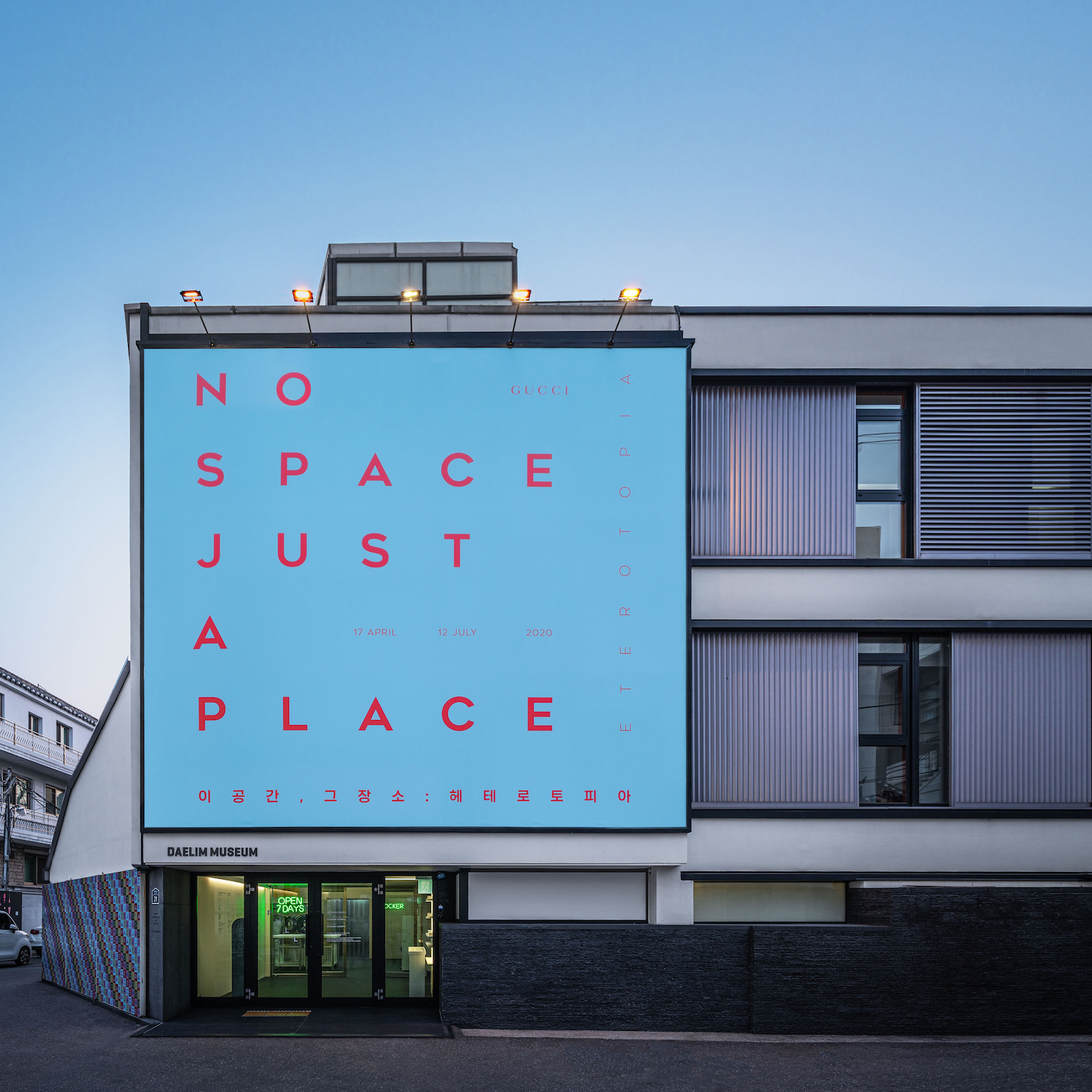No Space, Just A Place: Gucci’s Eterotopia in Seoul
A multi-layered project by Gucci supporting the cultural landscape and contemporary art of Seoul.
With Seoul’s complex history of independent and alternative art spaces, and Alessandro Michele’s reflections of eterotopia, No Space, Just A Place asks viewers to think about what a different, desirable future may look like. Across the Daelim Museum’s three floors, the large-scale exhibit emphasizes 10 works from Seoul and five from Korean and international artists, each embodying the concept of a togetherness without singular identity.
“The acknowledgment of the moment of great uncertainty that humanity is currently experiencing now further encourages reflections on alternative modes of being and consuming in relation to one’s environment,” Gucci said of the exhibit.

Curated by French-Tunisian poet and curator Myriam Ben Salah, her radical visions fuse with Michele’s meditations on society. The ambitions of the exhibit’s alternative spaces derive from these meditations, touching upon the ethics and aesthetics of relationships between genres and gender, the ideologies around learnscapes, an urgency for self-expression, and a time-proof anthropological manifesto.
Audio Visual Pavilion, Boan1942, d/p, Hapjungjigu, OF, Post Territory Ujeongguk, space illi, Space One, Tastehouse, and White Noise are among those that present a project conceived by their own team that comes into dialogue with Salah in their given space. The alternative and independent spaces in No Space, Just A Place are ultimately an ode to the initial rise in 1990’s Seoul of the underground venues defied commercial art and authority, engaged politically, and unapologetically critiqued the art world.

“Every project is thematically tied to the idea of the alternative spaces as a utopian place in which to set new empowering narratives, dwelling on the understanding of otherness, the exploration of minority identities, and queer politics,” Gucci said.
Head to the exhibit’s website to find out more about each space, and walk through the Daelim Museum in a 360 degree virtual tour.